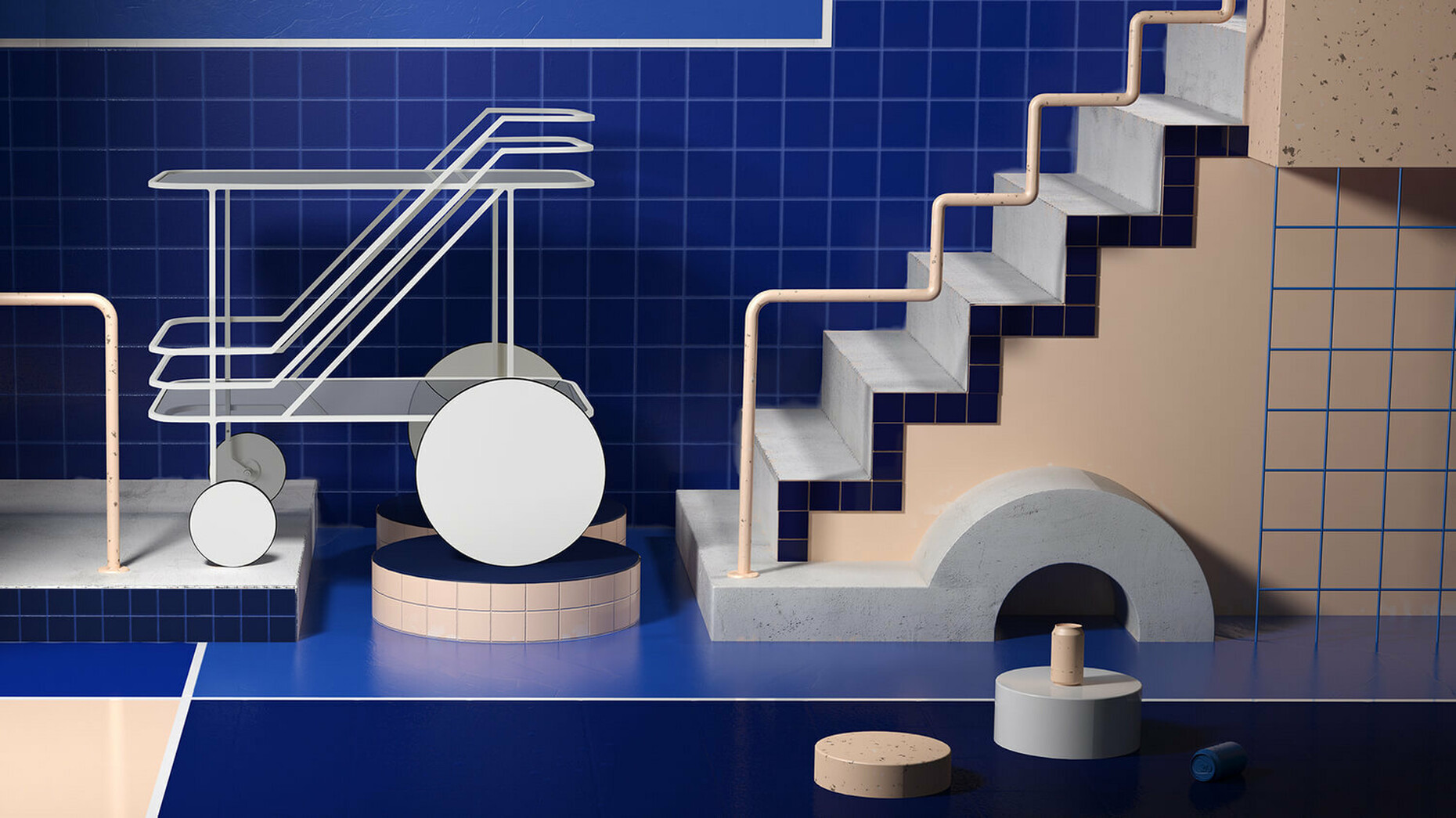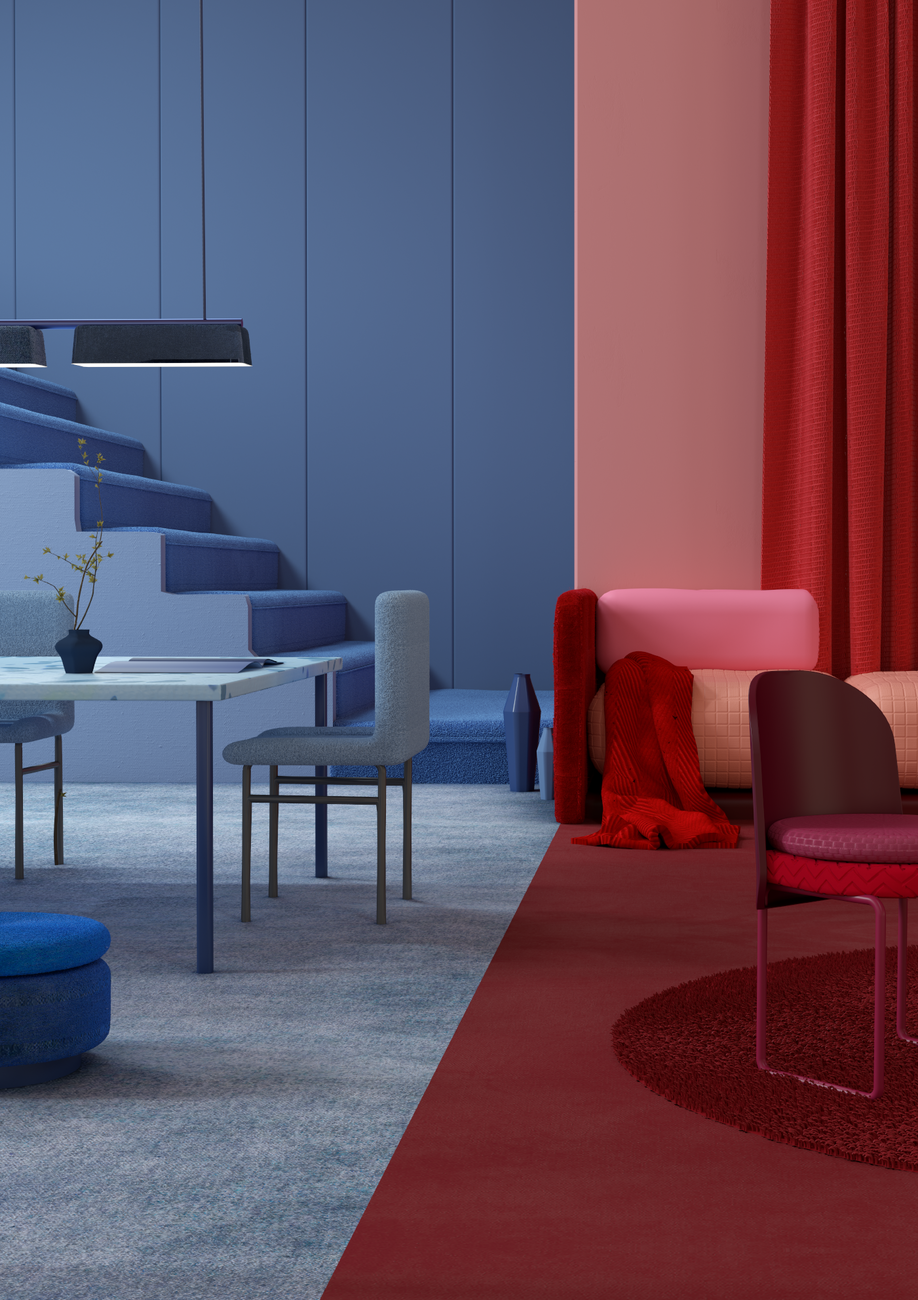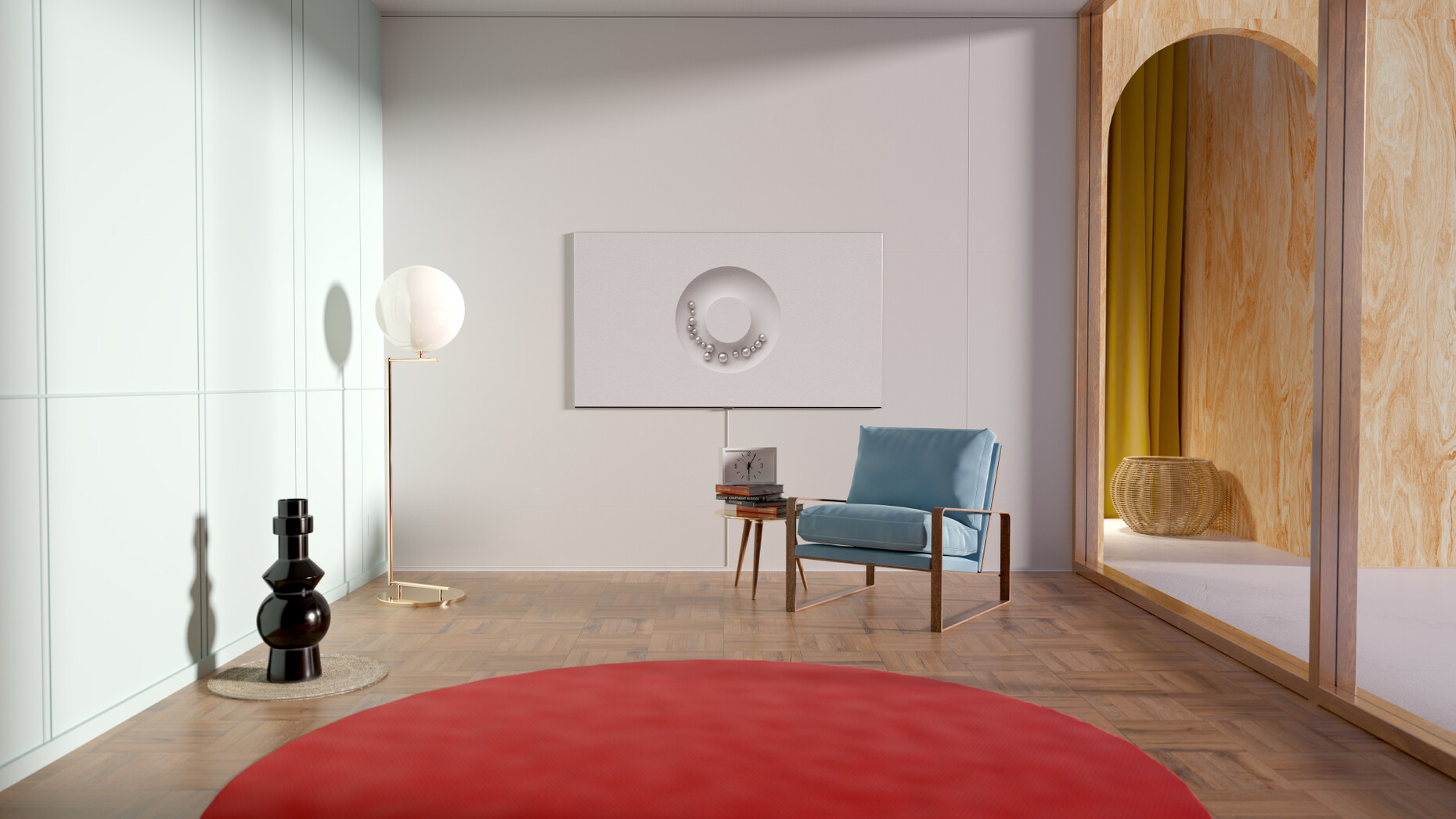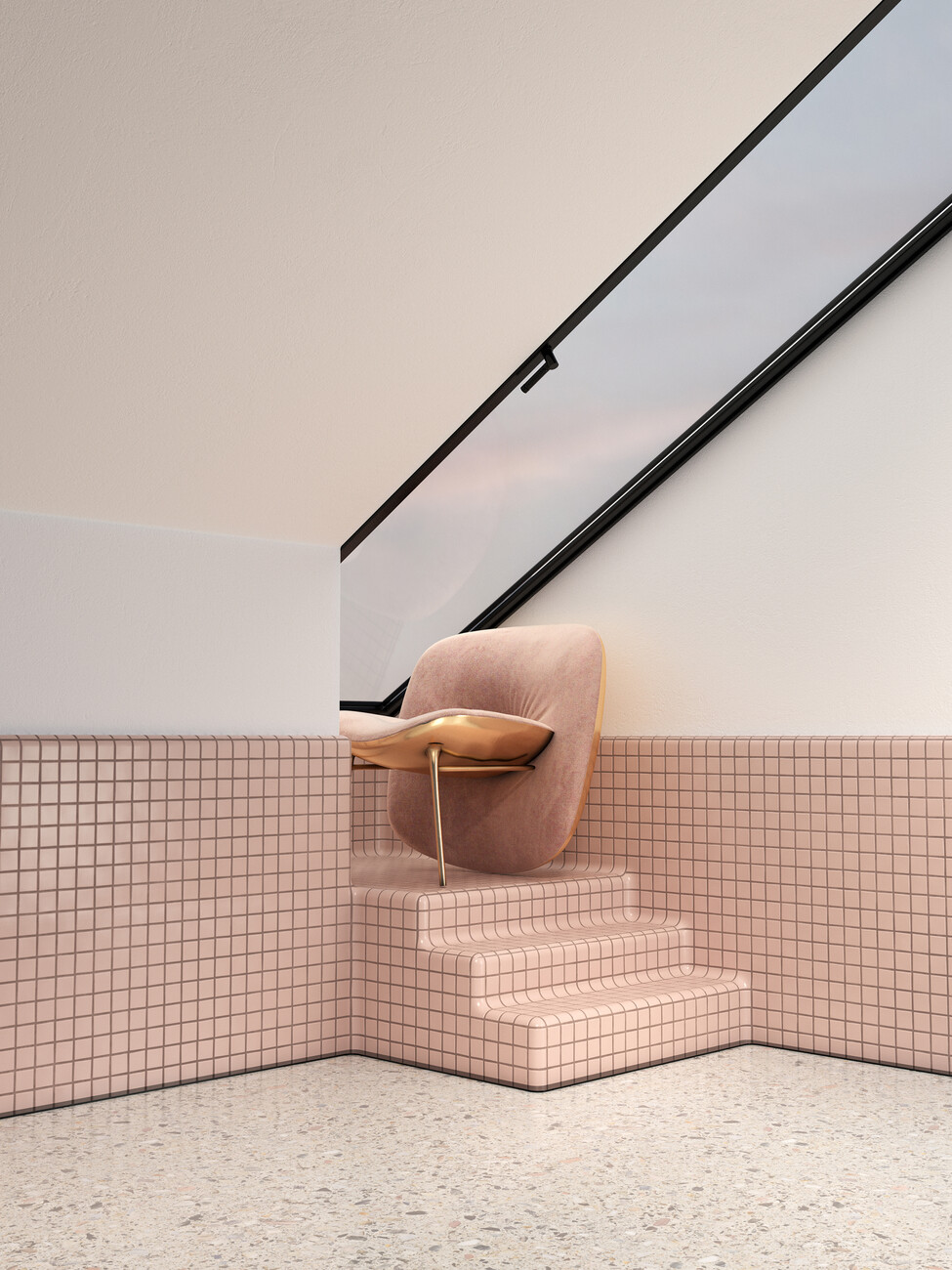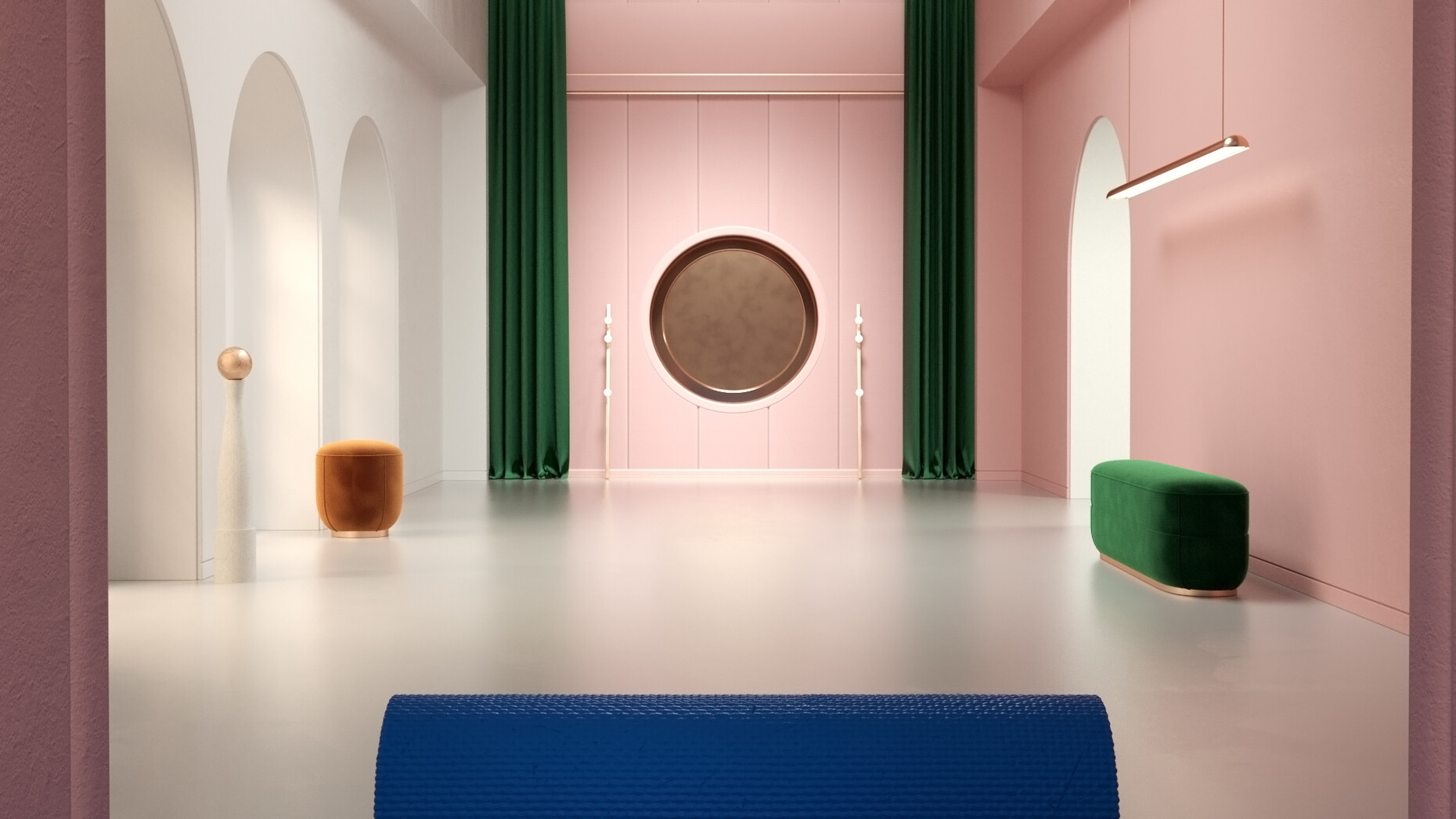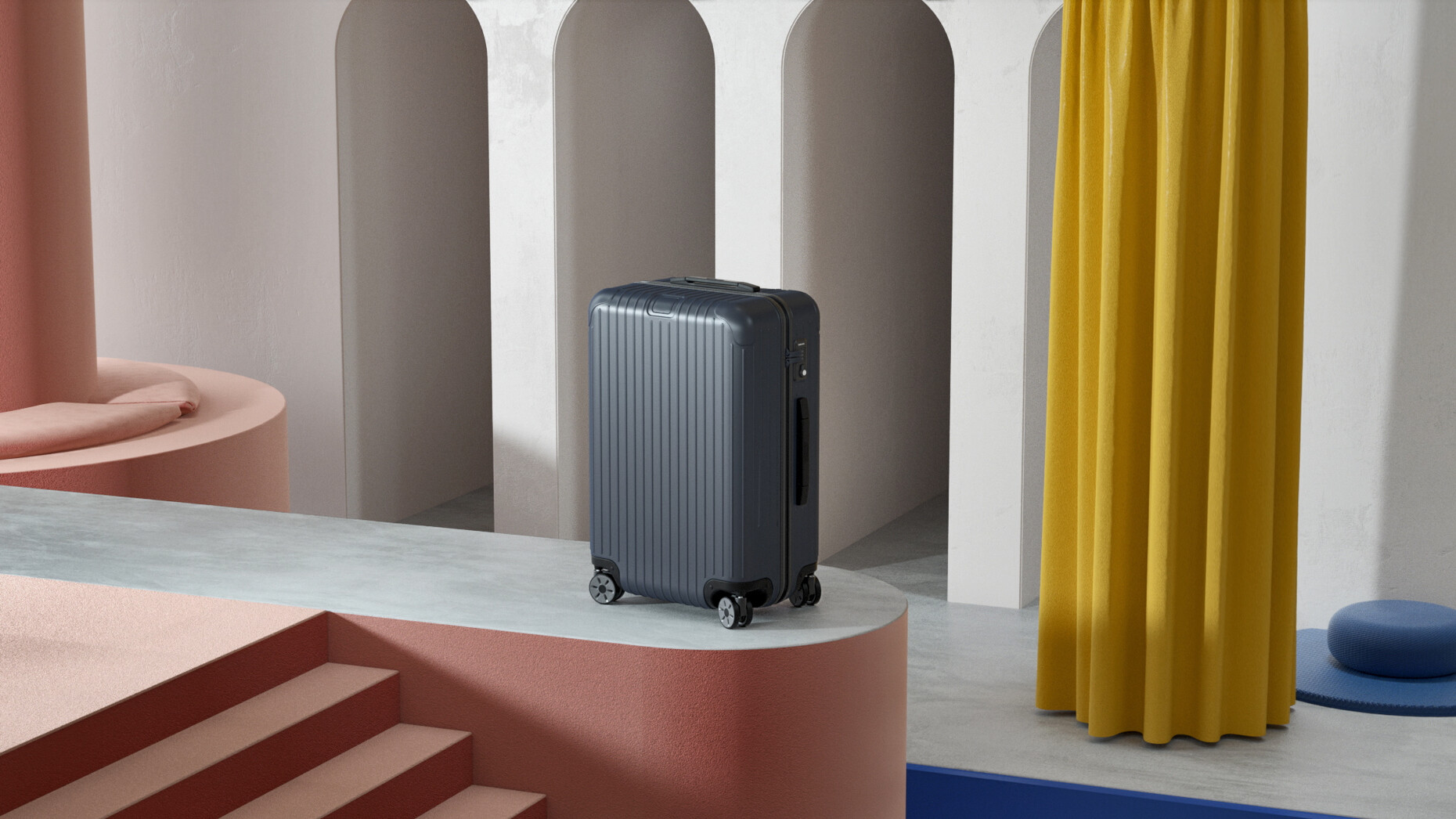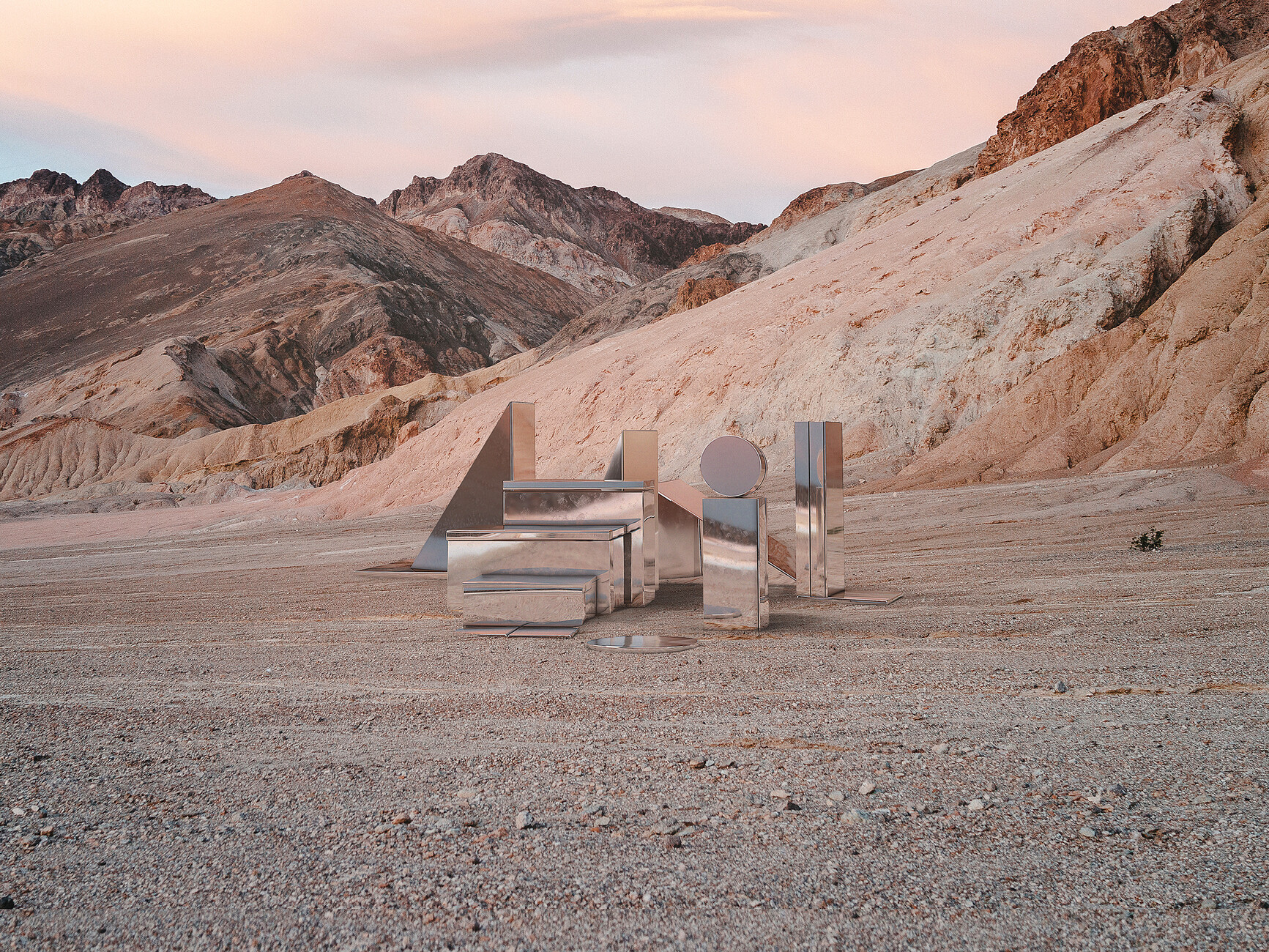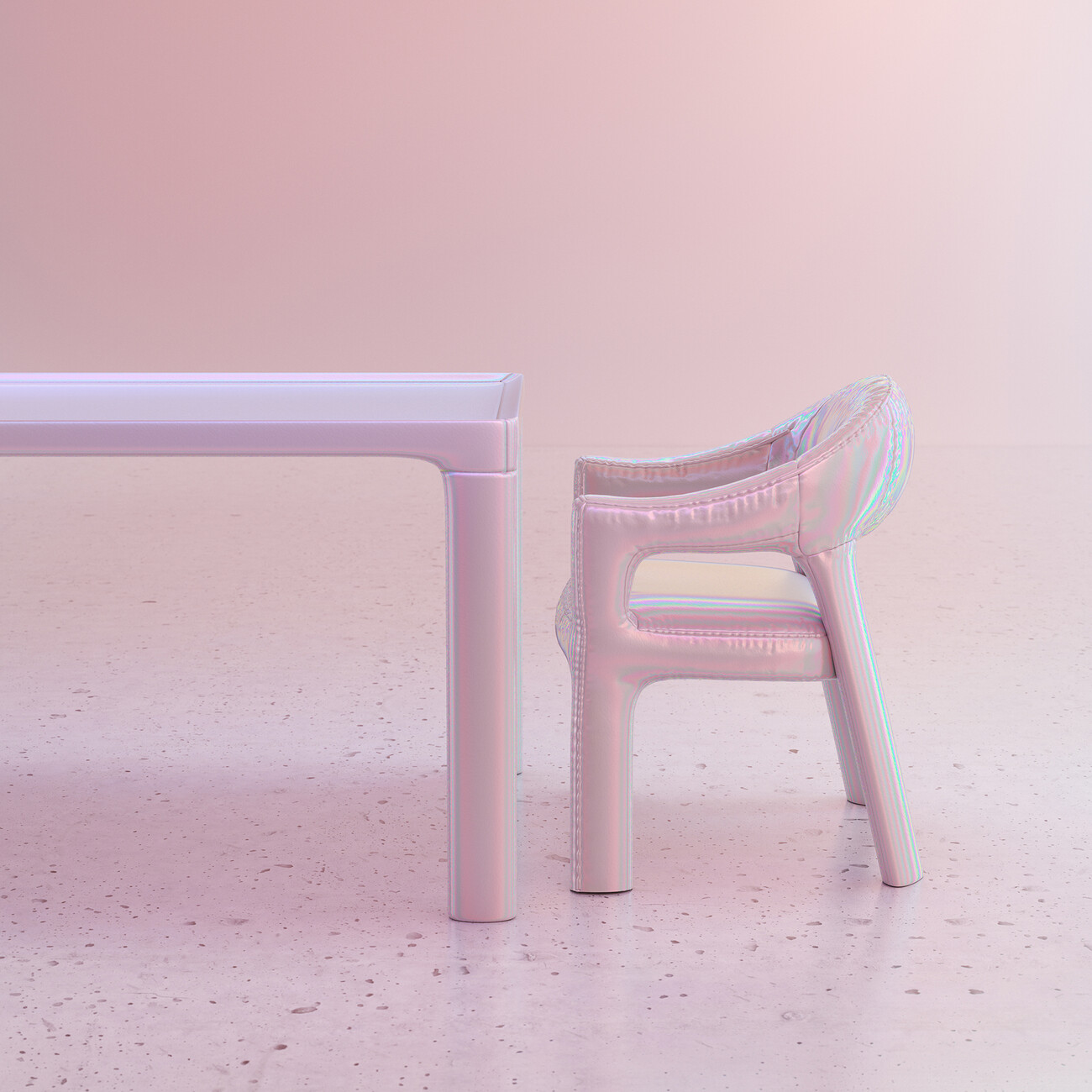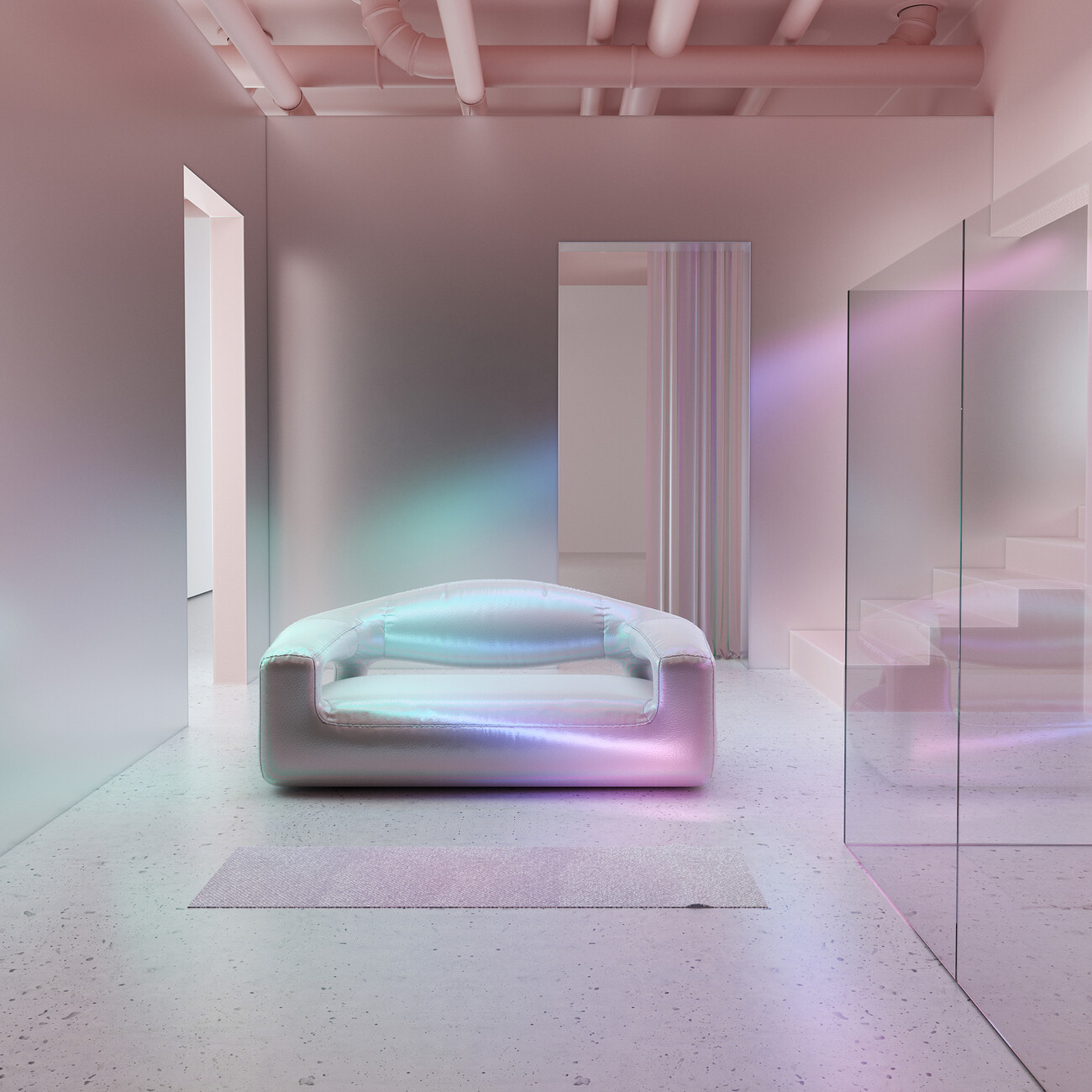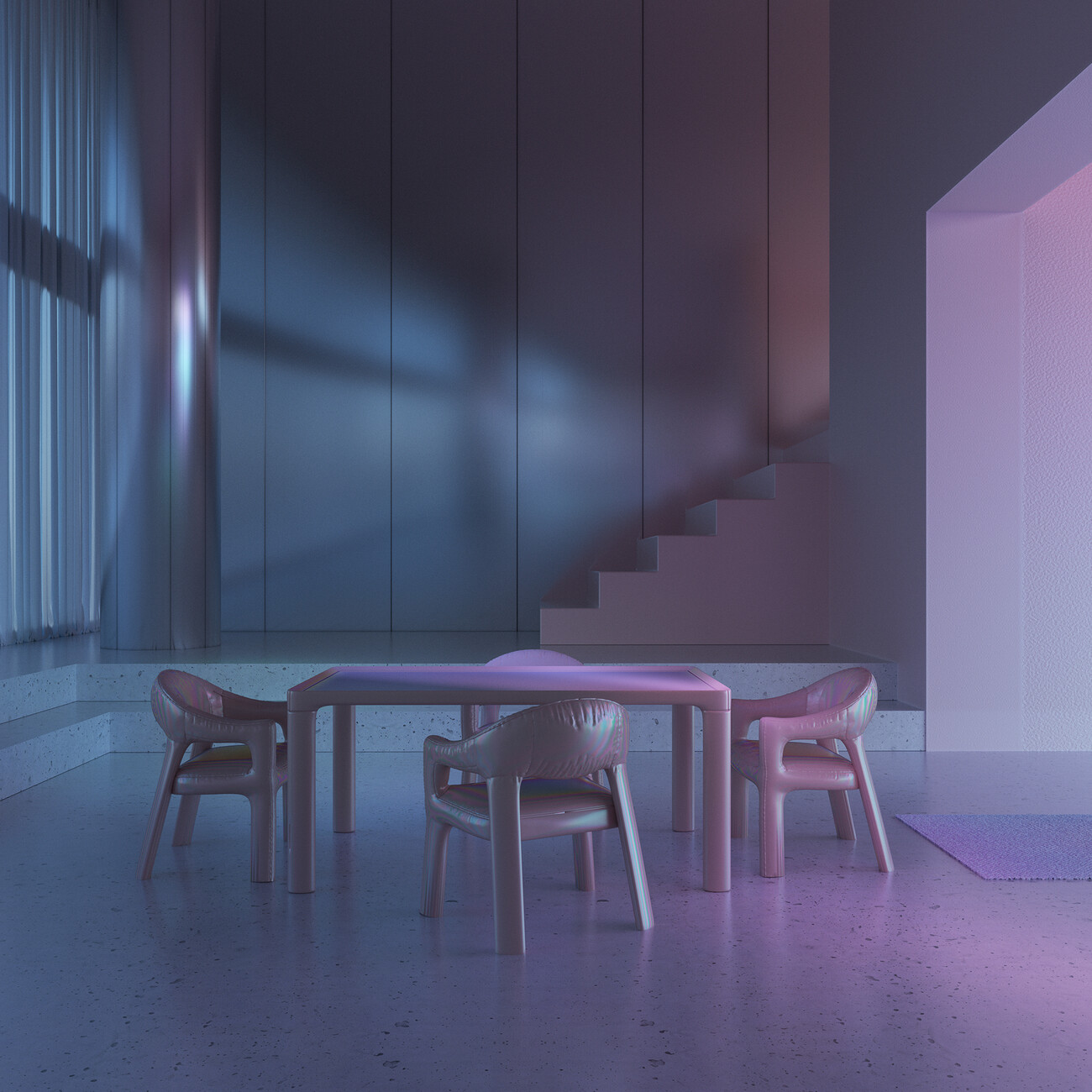Designer of dreams
Visualization in 3D is a popular tool in design and architecture: This computer graphic process makes it possible to depict rooms and buildings so realistically that they are hard to distinguish from photographs. Using VR goggles and green screens, we can even experience digital worlds as if they were real environments. Design studio Six N. Five, founded by Ezequiel Pini in Barcelona in the year 2014, makes use of digital technology to enjoy limitless scope for its fantasies in the creation. At the same time, the studio tends to seek inspiration in art and design history: Rational rules or the function of the properties and rooms depicted are not questioned in terms of categorization; instead, the supposed reality is exaggerated, perfected and taken into the realms of fantasy. As a result, the constructed reality seems to let us enter the subconscious ego of the world of dreams. The name “Six N. Five” actually comes from the very real time when Ezequiel Pini and his team worked as permanently employed graphic designers: “At 6:05 we would generally come home from work and begin working on our own designs. We also just liked the way this combination of numbers looked”, he explains.
Alien beauty
The designs by Six N. Five aim at aesthetics – their backdrops show a flawless, fragile beauty that is generally presented in soft colors: “Pastel colors are part of the studio’s DNA,” says Ezequiel Pini. The alien beauty that a glance into a dream appears to capture triggers a calming feeling of comfort in the observer. The fact that no living beings are depicted in their designs allows all the more scope for the individual’s power of imagination and their emotional connection to the studio’s works: “We create scenarios that invite people to navigate with their own minds, to explore them and to fill them with their fantasies,” says Pini. At the same time, everyday objects like a stool or a bed trigger our cognitive ability of recognition and give the digital image genuine dimensions. The digital twins of real objects and the artificial worlds in the Six N. Five universe merge almost seamlessly, as can be seen in their works for major corporations like Rimowa, Samsung, Laufen or Nike: Six N. Five embeds from suitcases to sneakers or sanitary ceramics the products so seamlessly into the digital flow that in the final outcome you barely perceive this to be advertising. Ezequiel Pini and his team begin the creative process without dummy runs directly on the computer: “First we produce a rough illustration with geometric elements, which we then perfect layer by layer right down to the addition of shade and dust”, explains the graphic designer, adding: “The presentation in 3D not only gives us the chance to capture and repeat the dream images, but also to perfect them.”
Dreams come true
Six N. Five is already working towards making the digital world more than an unreal realm at the interface between design and reality: At the beginning of the year they added to their skills of concept creation, art direction and set design by completing an interior design project themselves for the first time. “Holo-Scandinavian” is the name of their first furniture collection, made up of prototypes. For this project, the studio teamed up with designer Artur de Menezes and mixed up the clear lines and organic forms of mid-century designs with a good dose of holographic glamor. Further analogue products are set to follow this debut: “We will certainly continue to spend most of our time in the digital world, but in parallel to this we want to tap into a new field: the world of real things that you can perceive with all your senses. There are still a few innovations to come over the next few months”, Eziquel Pini adds.



